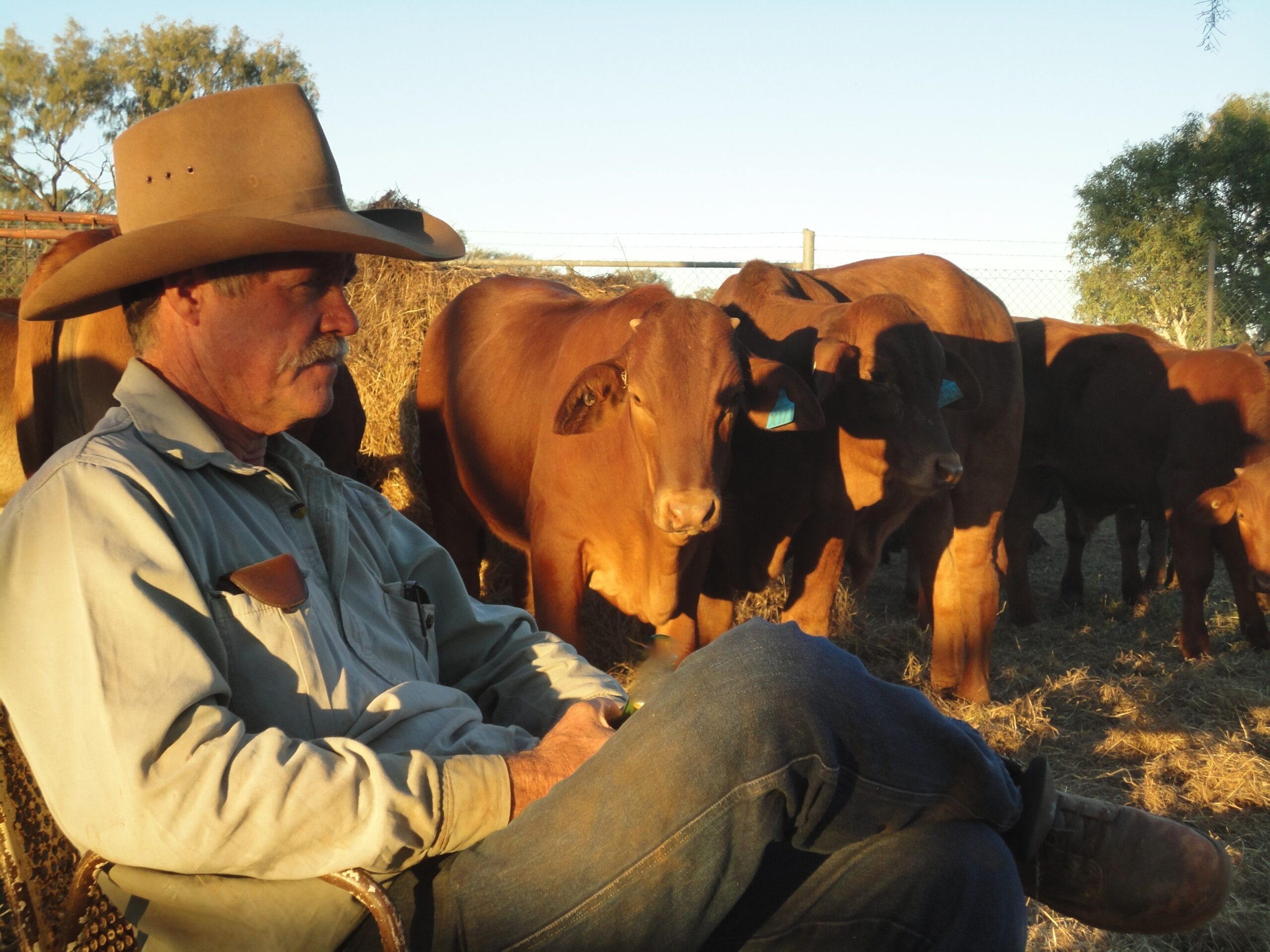A cattleman’s view of grazing land management
Bryan Gill is a tall, quiet man with a welcoming grin and a long involvement with the Central Australian pastoral industry. His career began 40 years ago, working for legendary cattleman, Ted Hayes, at Undoolya Station. Since then he has been a Stock Inspector, Advisory Officer and is the current manager of Old Man Plains (OMP) Research Station, just outside of Alice Springs. He is well respected by local producers for his practical knowledge and hands-on experience.

For the past decade, Bryan has been responsible for day-to-day operations of the Quality Graze project run by the Department of Industry, Tourism and Trade. The long-term trial is investigating grazing strategies suitable for producing premium beef in a highly variable climate. Five of the grazing strategies are stocked according to the long-term carrying capacity, with a mix of rotation and continuous grazing, and one strategy is grazed at twice the recommended utilisation.
Bryan thinks that getting the long-term carrying capacity right has been critical to the success of the Quality Graze project. ‘It has allowed for a big improvement in land condition,’ he says. ‘Because our country is now in good condition, we get good feed from very little rain. We finish off sale steers, even in dry years’. Research data shows the improvement in land condition means that OMP now grows twice as much pasture as it used to.
Stocking to the long-term carrying capacity also ensures carryover feed is available from one season to the next. Security of forage has allowed herd numbers to remain stable for the past 12 years despite OMP experiencing the wettest year, and the driest 3-year period, on record. Bryan believes science has got the numbers right; OMP runs approximately 350 Droughtmaster breeders and turns off approximately 160, 30-month-old, premium steers every year. ‘We don’t really think about what the season will be like because we know we have enough feed for our production system, even in the dry years’, he says. ‘We also got really good prices when the good seasons returned because we didn’t have to rebuild our herd.’
If there is one thing Bryan could change it’s the mindset that grass left standing in the paddock is wasted. ‘That leftover feed is an opportunity. To improve land condition, build up reserves of feed or finish sale stock. If we ‘stocked-up’, we’d be in trouble in about three months,’ he says.
Producers often worry that kangaroos will eat reserved feed yet in Bryan’s experience, that isn’t the case. ‘There might have been two or three years of higher kangaroo numbers but they took care of themselves’, he says. ‘The improvement in land condition was far more useful, because with better land condition the response to rain is that much stronger – more grass and more beef’.
There is one strategy in the research trial that is grazed at a rate higher than recommended. ‘When it gets dry, that paddock worries me. I’ve been out there on a bike, thinking it doesn’t grow as much feed as it used to,’ he says.
Cattle behaviour is of particular interest to Bryan. As part of the experimental design, growing steers are often separated from birth-paddock companions when allocated to the different grazing strategies. As mature animals they are reunited for a month prior to trucking. Bryan has noticed the cattle will re-sort themselves into groups based on their birth-paddock. He actively incorporates this knowledge into the production system by allowing stock time in the yards to find their companions. ‘They will often come through the race in numerical order according to their ear tag. They probably travel with less stress and arrive in better condition when they are travelling with their mates,’ he says.
Bryan is very proud of the OMP cattle; they have a solid reputation for good temperament and great beef. Selecting for temperament is important, but weaner training, low stress stock handling techniques and understanding cattle behaviour is where the real work is done. Sale steers get an extra ‘practice run’ through the yards when final pre-trucking weights are recorded. ‘When it comes to trucking day, they just walk up. Heads down, taking their time, one after the other onto the truck. No jiggers, no yelling,’ says Bryan. Stressed cattle don’t tend to produce high quality beef, so Bryan works hard to keep the herd happy.
Bryan is retiring this year but, like all good cattlemen, he is still thinking about how he might tweak the Quality Graze production system. ‘I’d like to try spelling some of the continuously grazed paddocks to see if we can improve land condition further. We could also improve some of our yards, to reduce cattle stress a bit more,’ he says. ‘Overall though, getting the long-term carrying capacity right means it’s a pretty reliable system. The herd doesn’t change much and we aren’t constantly looking for rain.’ That’s a pretty amazing characteristic for any grazing strategy!
‘Overall though, getting the long-term carrying capacity right means it’s a pretty reliable system. The herd doesn’t change much and we aren’t constantly looking for rain.’
Written by Alison Kain, Pastoral Production Officer, Northern Territory Department of Industry Tourism and Trade.